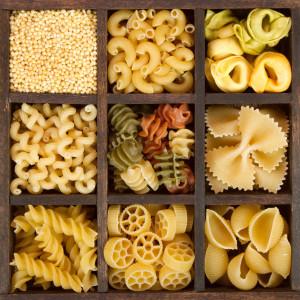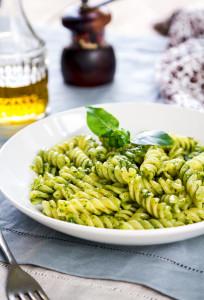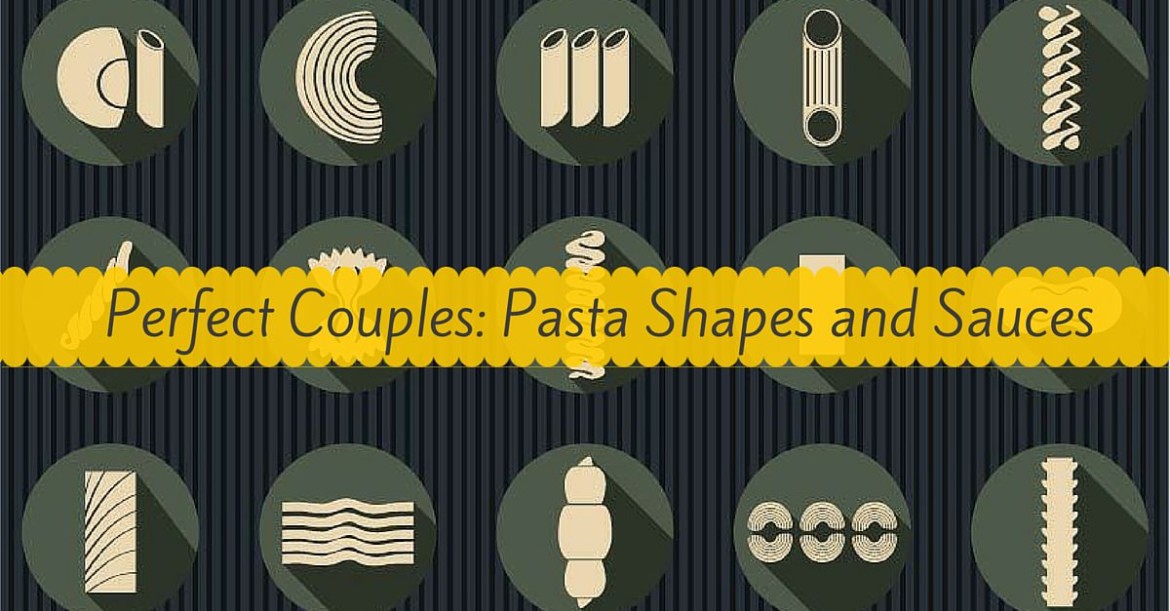- Tomatoes: A Taste of Summer - July 26, 2017
- The International Origins of Pasta - July 12, 2017
- A History of Italian Americans in Salt Lake City - June 29, 2017
Perfect Couples: Pasta Shapes and Sauces
Gnocchi. Fusilloni. Tagliatelle. Farfalle. Rigatoni. Capellini. Penne. Orecchiette. Spaghetti. Linguini.
 There are hundreds of beautifully crafted pasta shapes in Italian cuisine, and with good reason.
There are hundreds of beautifully crafted pasta shapes in Italian cuisine, and with good reason.
“The right sauce in combination with the right pasta creates gustatory magic,” says Italian American chef Lidia Bastianich. “You may not think about it every time you open a box of pasta, but the shape you choose plays an important role in the outcome of the dish. The right shape can make a good sauce great; the wrong shape can dampen the appeal of even the best sauce.”
There are approximately 350 different shapes of pasta, and according to authors of the cookbook, The Geometry of Pasta, there are 1,200 different names. For example, farfalle is also known as “bowtie” or “butterfly.” On tortellini, Jacob Kennedy, chef and co-author of the cookbook, says,
“Their shape – reputedly at least – is based on the shape of Lucrezia Borgia’s navel. And when you eat them, particularly in a very light sauce, you can really feel the pasta shape…it is slightly erotic if you think about it enough.”
How to properly pair your pasta and sauce
 Certain combinations, such as linguine and clam sauce or ziti and meat sauce, are paired texturally. Chef Kennedy notes that pastas shaped like cups go with “something lumpy so you can catch it.” As such, shells go well with thicker meat sauces or heavy cream sauces. Meanwhile, long and skinny pasta shapes, such as linguine, are often paired with light seafood or oil-based sauces. Pastas with shapes that twist, such as gemelli or fusilli, are often served with smoother sauces, such as pesto, that cling to the rivets in the pasta. Ravioli, tortellini, and other filled pastas get their flavor from their fillings and are usually served with a light butter or oil, rather than a heavy sauce.
Certain combinations, such as linguine and clam sauce or ziti and meat sauce, are paired texturally. Chef Kennedy notes that pastas shaped like cups go with “something lumpy so you can catch it.” As such, shells go well with thicker meat sauces or heavy cream sauces. Meanwhile, long and skinny pasta shapes, such as linguine, are often paired with light seafood or oil-based sauces. Pastas with shapes that twist, such as gemelli or fusilli, are often served with smoother sauces, such as pesto, that cling to the rivets in the pasta. Ravioli, tortellini, and other filled pastas get their flavor from their fillings and are usually served with a light butter or oil, rather than a heavy sauce.
If this is too much to remember, Chef Bastianich has an easier way to ensure good pairings:
“The flatter and longer shapes combine well with olive oil and cream sauces, while sturdier shapes, such as orecchiette, work well with chunkier and more assertively flavored sauces. Tomato and simple cream and butter sauces are universal and will go well with basically all pasta.”
Highly-textured shaped pastas pair well with highly-textured sauces (imagine the sauce clinging to the nooks and crannies of the pasta). Cup or tube-like pastas go well with thick, chunky sauces (imagine scooping up the sauce). And, long, thin pastas go well with olive-oil based sauces which coat the pasta surface without drowning it.
Tips when cooking your pasta
While cooking pasta, be sure to use a large pot to give the pasta room to grow and move; this also prevents it from sticking to the bottom and sides. Remember to add salt – there is an Italian saying to flavor the water as salty as the sea to properly season the pasta. Olive oil is unnecessary in the water, as the pasta will be finished in the pan with the sauce. Once the pasta is nearly cooked, drain and transfer it into a pan with the warmed sauce where it will finish cooking. This ensures that the pasta is well coated.
Serve your pasta and sauce while hot – and relish in the fact that you have brought together the perfect couple.

